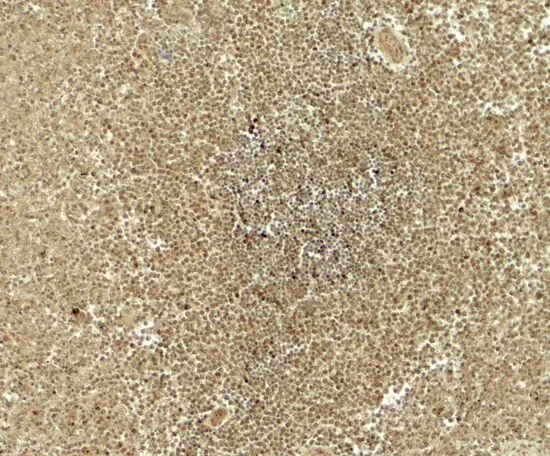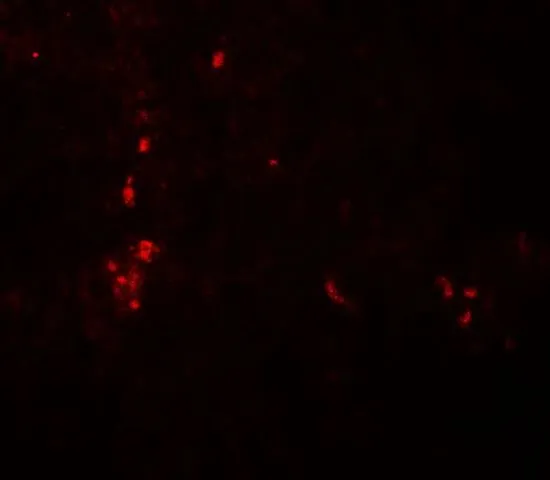
IHC-P analysis of human spleen tissue using GTX31942 ATG4B antibody. Working concentration : 5 microg/ml
ATG4B antibody
GTX31942
ApplicationsWestern Blot, ELISA, ImmunoHistoChemistry, ImmunoHistoChemistry Paraffin
Product group Antibodies
ReactivityHuman, Mouse, Rat
TargetATG4B
Overview
- SupplierGeneTex
- Product NameATG4B antibody
- Delivery Days Customer9
- Antibody SpecificityAt least two isoforms of ATG4B are known to exist; this antibody will detect only the larger isoform. ATG4B is predicted to not cross-react with other ATG4 proteins.
- Application Supplier NoteWB: 1 - 2 microg/mL. IHC-P: 5 microg/mL. *Optimal dilutions/concentrations should be determined by the researcher.Not tested in other applications.
- ApplicationsWestern Blot, ELISA, ImmunoHistoChemistry, ImmunoHistoChemistry Paraffin
- CertificationResearch Use Only
- ClonalityPolyclonal
- Concentration1 mg/ml
- ConjugateUnconjugated
- Gene ID23192
- Target nameATG4B
- Target descriptionautophagy related 4B cysteine peptidase
- Target synonymsAPG4 autophagy 4 homolog B; APG4B; ATG4 autophagy related 4 homolog B; AUTL1; AUT-like 1 cysteine endopeptidase; autophagin-1; autophagy-related cysteine endopeptidase 1; autophagy-related protein 4 homolog B; cysteine protease ATG4B; hAPG4B
- HostRabbit
- IsotypeIgG
- Protein IDQ9Y4P1
- Protein NameCysteine protease ATG4B
- Scientific DescriptionAutophagy is the process by which endogenous proteins and damaged organelles are destroyed intracellularly. Autophagy is postulated to be essential for cell homeostasis and cell remodeling during differentiation, metamorphosis, non-apoptotic cell death, and aging. Reduced levels of autophagy have been described in some malignant tumors, and a role for autophagy in controlling the unregulated cell growth linked to cancer has been proposed. This gene encodes a member of the autophagin protein family. The encoded protein is also designated as a member of the C-54 family of cysteine proteases. Alternate transcriptional splice variants, encoding different isoforms, have been characterized. [provided by RefSeq, Jul 2008]
- ReactivityHuman, Mouse, Rat
- Storage Instruction-20°C or -80°C,2°C to 8°C
- UNSPSC12352203


